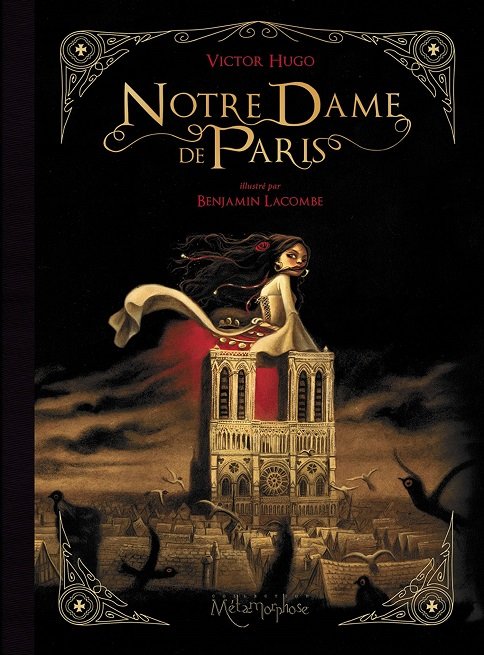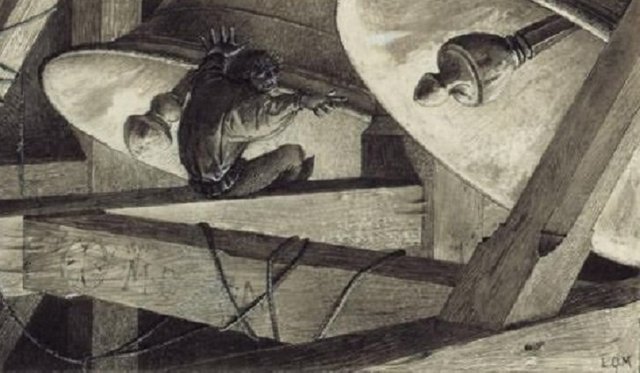Victor Hugo and his book "Notre-Dame de Paris" /part 3/
The study of the interpenetration between the dramatic spiritual transformations of the Transitional Historical Age and the intricately intertwined intellectual and emotional relationships between the characters that make up the "private intrigue" is the main artistic objective of romance Hugo. In this romantic study, particular attention is paid to the dramatic opposition that is characteristic of the transitional epochs - between the morbid prejudices of the declining public spheres and the new intellectual and emotional attitudes in society which, at the beginning of each historical transition, are embodied by free- unusually volitional and energetic individuals.
Among the characters in the novel stand out Esmeralda and Quasimodo as colorful personifications of the dynamic changes in the minds of ordinary people at the dawn of Modern Times. With her magnetic impact, the beautiful Esmeralda reminds more of a fairytale fairy or an angel benevolent than a earthly woman, although it is destroying her physical beauties, her open sociability and her passionate sensibility. The romantic Hugo seems to experience the grief of the traveling poet Gregor, a hero in the novel, who still fails to perceive the soul of the outwardly cheerful but mysterious and unpredictable for other beauties. Besides its supernatural power to mesmerize and conquer, Esmeralda has both child impulsivity and the charming radiance of gaining wisdom among the life-suffering woman. No less colorful is the grotesque image of the Notre Dame Quasimodo, which combines astonishing physical amorgam with amiable mental nobility. He repels at first glance with his quadriceps, the horseshoe mouth, the small left eye, clogged with a dull reddish eyebrow, and the right - hidden by a huge wart, the teeth bent like a fortified wall, and a bearded beard.
Grimaces of the horn ringing remind us of horrible images of ugly animals on the facade of the cathedral. His big, jagged teeth awakened associative connections with the jagged profile of Notre Dame towers. The hump craning between his shoulders resembles the pointed bell tower of the Gothic temple. But the Quasimodo-loving nature in its outward appearance seems to be "compensated" with generous human responsiveness: he is compassionate, always ready to help his neighbor when he is in trouble, fair, truthful and loving as a child. At the end of the novel, Quasimodo appears as a judge who, by punishing Evil, provides the triumph of the Good and suggests the following scheme, according to him, the evolution of this character: In the beginning he is a " a human being "(lack of a moral conscience), then undergoes a" process of humanization, "and at the end of the narrative narrative he is already a" human being "(the emergence of a moral conscience).


Thank you really, thank you, the work is magnificent I hurt in the heart read it started with the miserable, then the man who laughs and ends with our lady of Paris, for me the best writer in the world is Victor Hugo his works are given in tratro and musical great the teacher thank you for sharing my support with my humble vote .... a hug ..
You have recieved a free upvote from minnowpond, Send 0.1 -> 10 SBD with your post url as the memo to recieve an upvote from up to 100 accounts!